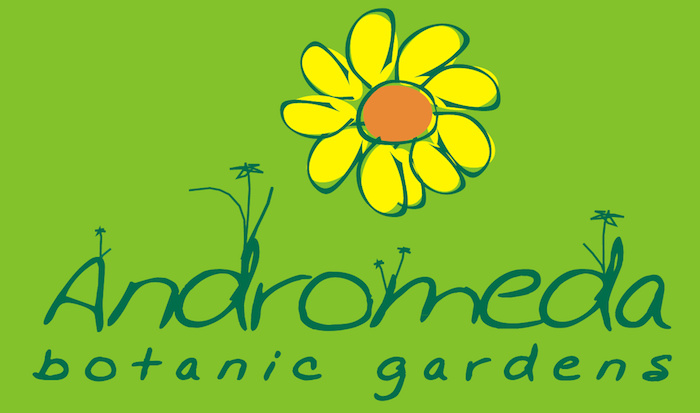Waiting for Mother – A Holistic Approach to Pests
-
Country
Barbados -
Region
Latin America and the Caribbean -
Programme
International Plant Sentinel Network -
Workstream
Savi -
Topic
Plant Conservation -
Type
Blog
News Published: 11 April 2025
Guest blog contribution from Sharon Cooke from Andromeda Botanic Gardens, Barbados.
A Guided Tour – Why we have Monarch Butterflies
It’s a gorgeous day at Andromeda Botanic Gardens. We’ve started the private guided tour to Barbadians early and the group is excited to experience the garden. The mid-morning sun is already quite high and there’s a gorgeous breeze, cooling our skin in brief, glorious moments during our walk. The shadows add to the contrasts; the birds are chirping; the Atlantic Ocean roars gently; and the occasional monarch butterfly flutters and floats. The latter brings an immediate joy to the faces of those present. I’ve already told the group of four visitors about our organic approach to managing this wonderful historic landscape.
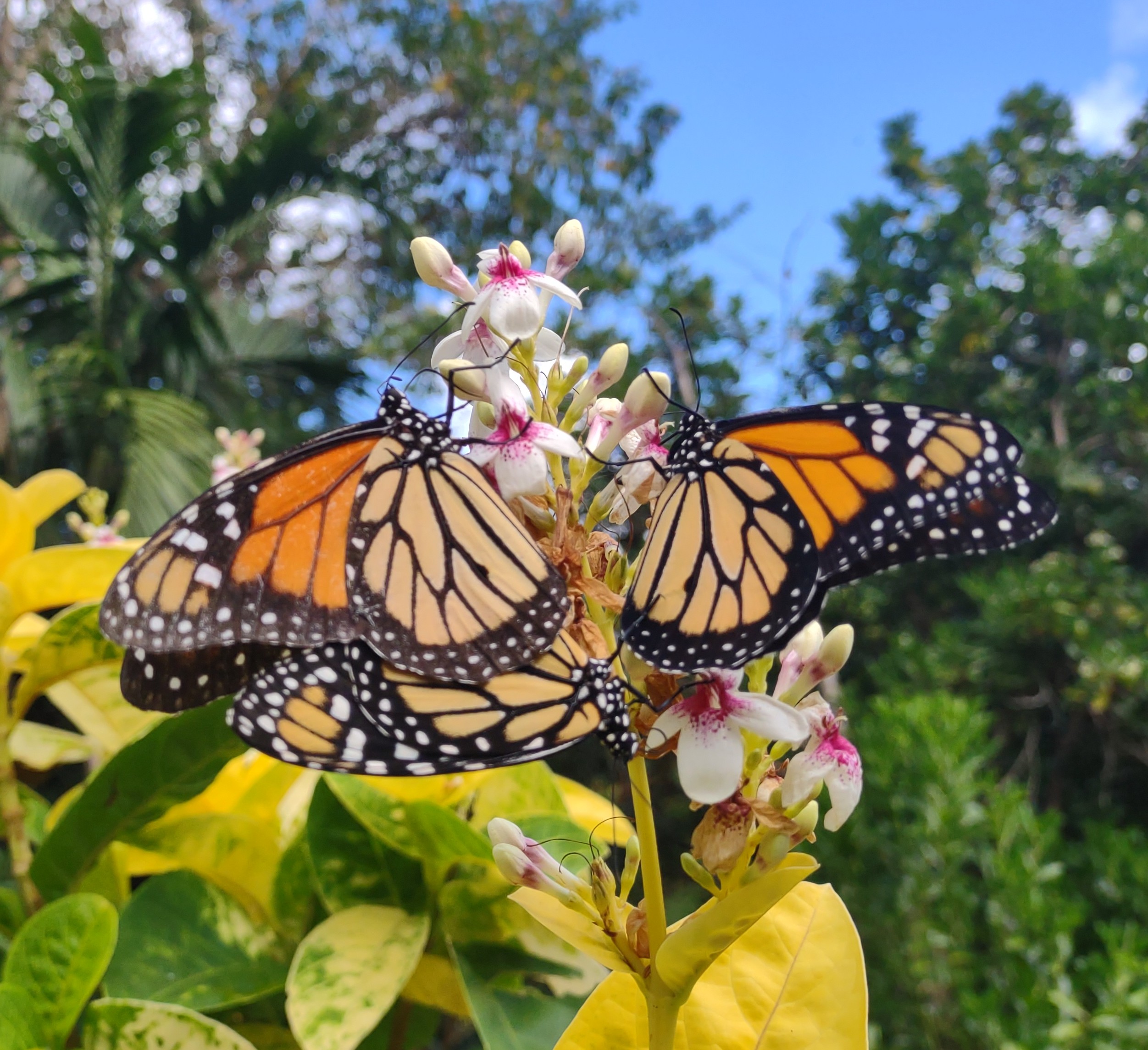
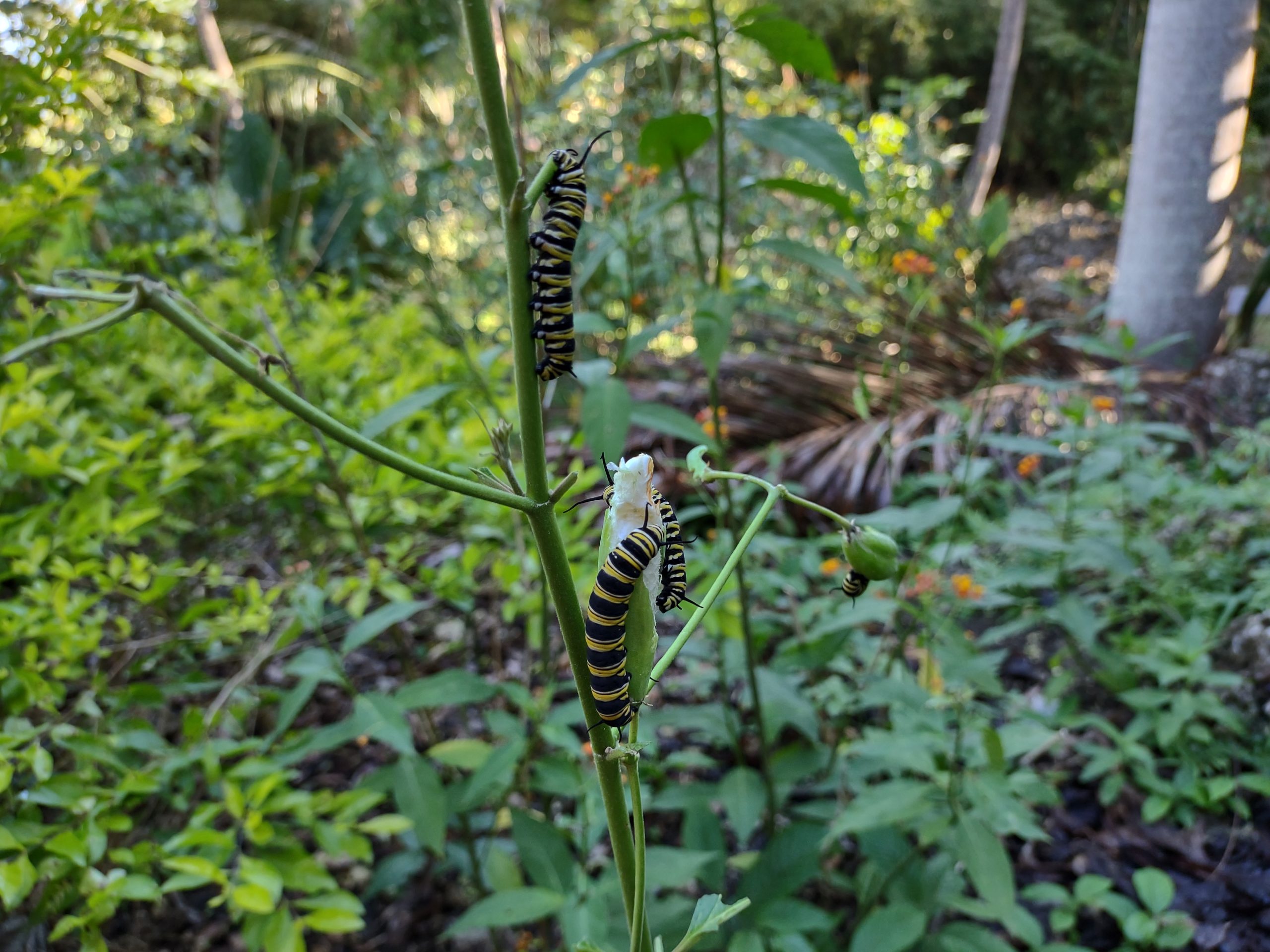
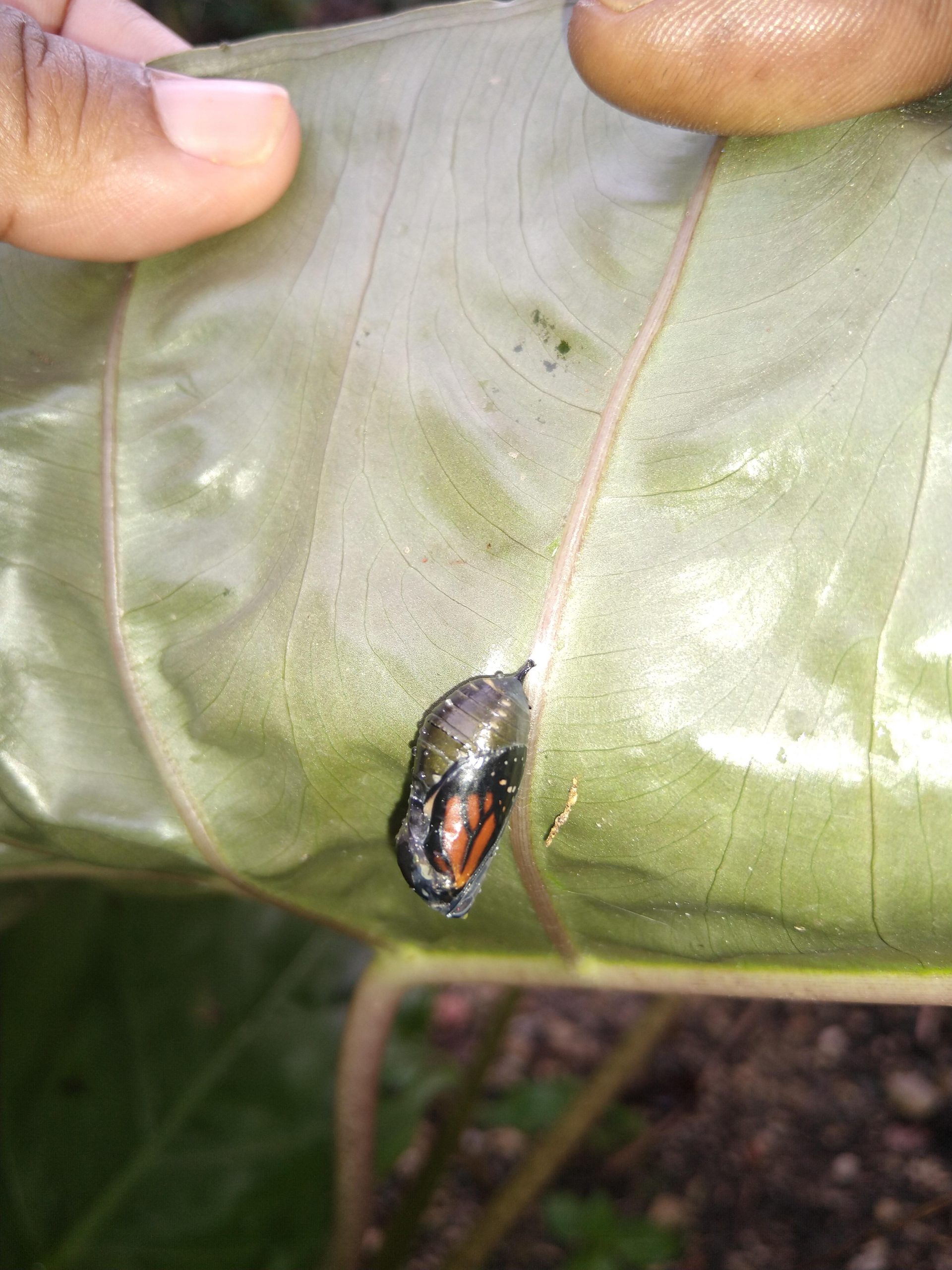 Monarchs on pseuderanthemum, Monarch caterpillars and chrysalis about to open at Andromeda Botanic Gardens
Monarchs on pseuderanthemum, Monarch caterpillars and chrysalis about to open at Andromeda Botanic Gardens
Our monarchs (Danaus plexippus) are among many butterfly species that have found a haven at Andromeda. Gulf fritillaries (Dione vanillae), buckeyes (Junonia coenia), sulphurs (Phoebis sennae), skippers (fam Hesperiidae) and more can be found feeding on the nectar-rich plants particularly on the Mexican sunflower (Tithonia rotundifolia), zinnias and various local species of the Verbenaceae family. Today we see mainly monarchs and sulphurs. Referring to the monarchs, from the older gentleman ‘I haven’t seen one of those since I was a child’, followed by ‘I’ve never seen these’, from the thirty-something woman. I hear this often and the reasons are obvious. Generally, habitat destruction and pesticide use lead to a decline in a variety of wildlife. In Barbados, the destruction and centuries of monoculture up to the mid-1970s, followed by continued use of many pesticides have had a devastating effect on our fauna. The butterflies are here because we plant specifically for them and we do not use pesticides. It really is that simple.
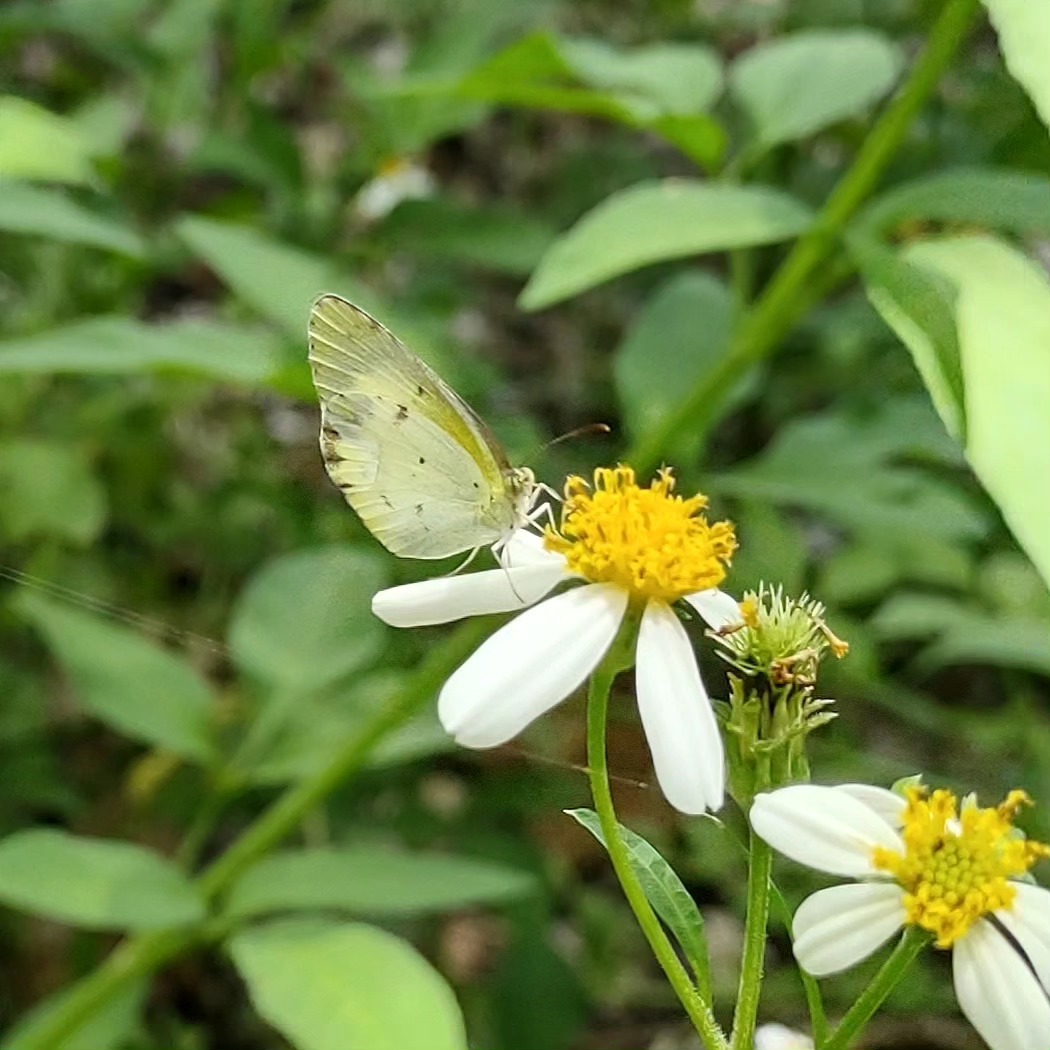 Little sulfur butterfly
Little sulfur butterfly
Mother’s Guidance
I made a choice, many years ago, and decided that as many organisms as possible should be able to survive and thrive. I’m not a scientist. I’m not an ecologist. Decades ago, I even used to spray glyphosate believing in the deactivation claims! I’m older and more informed. Now, I’m guided by Mother. I just have a belief that I should protect our fauna and flora, and try to create safe spaces for biodiversity (I do make an exception for alien invasive species – just making that clear). So much depends on the survival of the tiniest creatures. Perhaps I’m searching for some sort of ecological balance in this woman-made botanical landscape, in a country that truly suffered from centuries of destruction. I believe in being organic, yes. But it is almost as if I believe we owe it to the lifeforms of Barbados, we owe it to Mother, as a way of righting wrongs. Weird, right? Centuries of devastation can be righted somehow by being organic in this 8-acre space. Hmm…
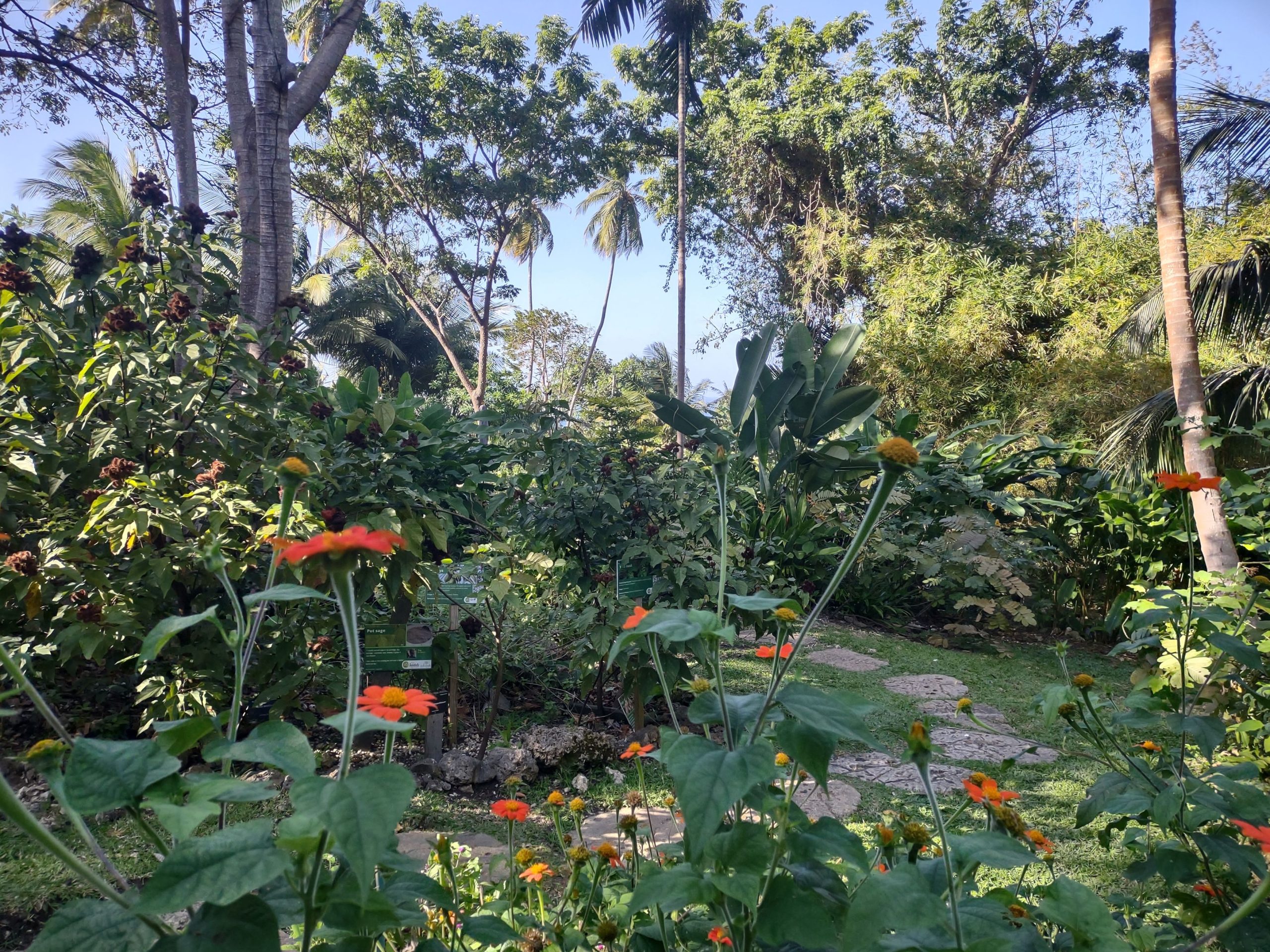
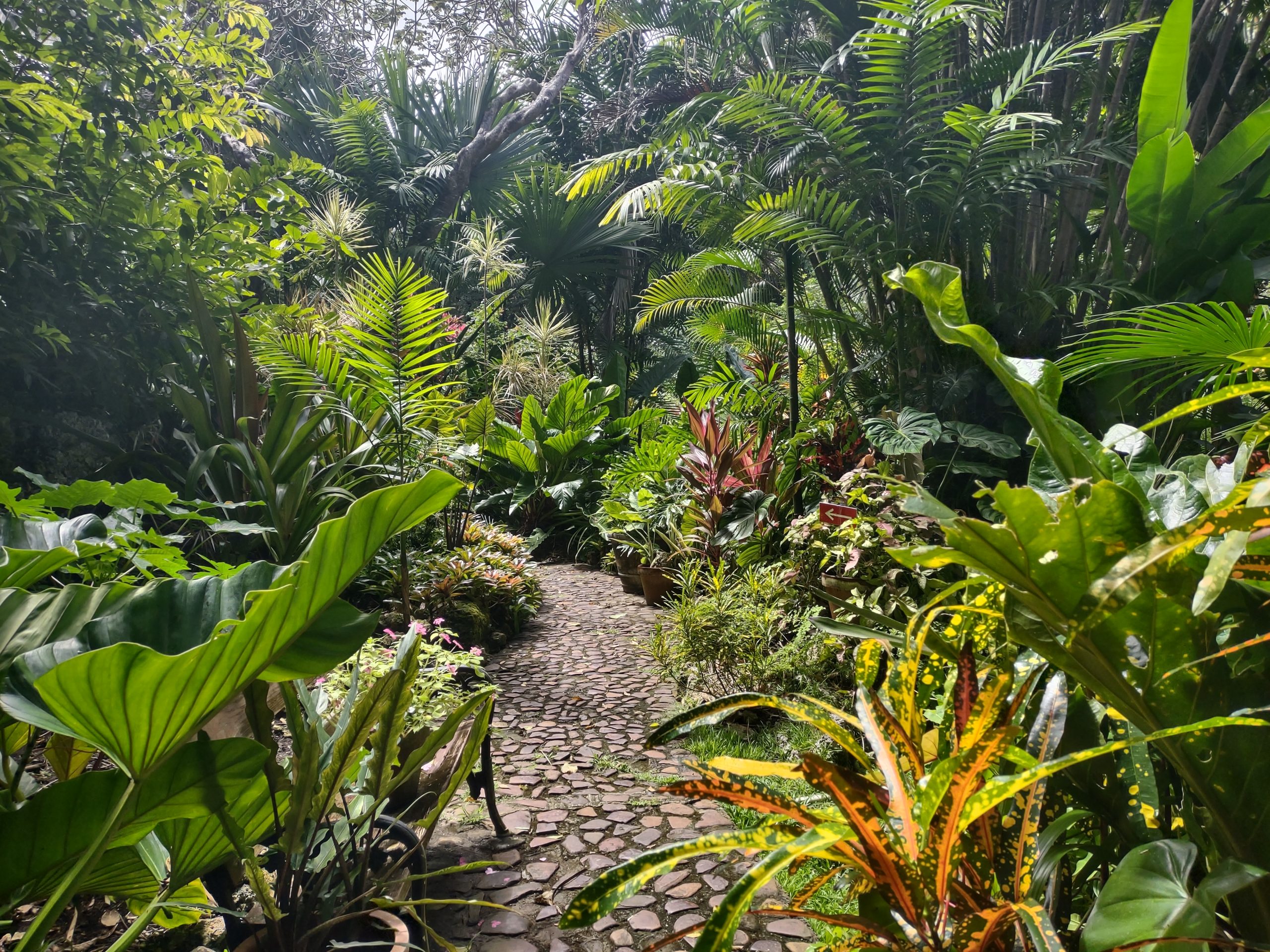 Wild and cultivated spaces at Andromeda Botanic Gardens
Wild and cultivated spaces at Andromeda Botanic Gardens
Managed public landscapes are created for a variety of reasons. People get inspired when visiting these wonderful environments and, I’m sure, many visitors are guided by what they see. The use of pesticides is deemed normal in many of these gorgeous spaces. The sight of one aphid, or one leaf of a weed and out come the pesticides. ‘We’ve always done it this way’. Well, women were not able to vote for centuries. I know that is not a like-for-like comparison but perhaps there are different and more holistic ways to approach ‘pests’? Maybe we should not call them pests – the power of language is huge! Maybe we can try alternatives? Is it a complete disaster if there are bugs on the plants? Will they destroy your space? Will visitors complain if they see a bug or will it make them curious? Perhaps it might encourage them to view their own garden spaces differently. I’m just suggesting that sometimes, in some circumstances, we can wait for Mother and encourage others to do the same.
Trial and Error
Andromeda is a managed public landscape, but it was created as a private garden from 1954. It still has a private home on site, Andromeda House. I live there so it’s my home and therefore my garden. Plus, I own the business and I’m the curator and head gardener. These facts give me the freedom to try things i.e. I can do what I like – yay! I have intentionally messy areas, where I’ve left it to Mother. For example, for the past decade, we’ve cut heliconia foliage and left them on the ground, next to these tropical beauties, to decompose, hold moisture in the soil and eventually feed the plants. This group of heliconias is possibly the healthiest one in Andromeda, even compared to the others that we feed regularly with sheep and green manures. I will try the same thing with a new group of Heliconias located in our Ethnobotanical Garden.
![]()
![]() Heliconia leaf debris
Heliconia leaf debris
Also, there’s a new bug to our garden, the eight-spotted flea beetle (Omophoita cyanipennis). These had been eating down a clump of blue vervain (Verbena hastata). It looked terrible, but I decided to wait, as we do have other clumps that did not get infested. So, we left it to Mother. What happened next? The flea beetle disappeared, and the clump is recovering, has produced flowers, so will self-seed. Perhaps the flea beetle will return. I hope the same process returns as I want that interaction between living creatures – that increase in biodiversity at Andromeda, and a new insect to show visitors! Am I taking a risk with these pests? Possibly. Blue vervain is a very common plant and can be obtained easily. Would I take the same approach with the only Chinese juniper (Juniperus chinensis) in Andromeda and possible the only one in Barbados? I doubt it. I’d probably spend hours trying to capture the little insects and ‘dispose’ of them. Have I made errors? Yes. A major infestation of cycad scale (Aulacaspis yasumatsui), I believe, quickly killed two of our precious plants. Although a lack of vigilance was the cause (yep, my fault), it served as a reminder to watch our plants more carefully. The organic control of many pests and diseases takes time.
The Guided Tour – Aphids and Ladies
Back to the tour. We grow milkweed (Asclepias curassavica), for the monarch butterflies and I take the group to our monarch haven. There are quite a few aphids on the tips of the plants. Although much literature states that the damage caused by the aphids is minimal, we’ve found that not to be completely accurate, sadly. Infestations have killed our young plants and, on mature plants, have prevented the formation of seedpods. These capsules, containing 100s of precious seeds, that burst vertically, allowing the silk-covered seeds to be released into the wind. Actually, we try to collect them before the seeds are distributed to unknown spots in or out of Andromeda. Sometimes we sow the seeds straight away. If not, we place them in the refrigerator, until we’re ready to sow them. We also propagate from cuttings – a much easier method. However, we’re keen to ensure more genetic variation by encouraging the use of seeds, as Mother intended.
So, how do we stop these tiny orange pests from their sap-sucking destruction? We wait for Mother. Sometimes, we get impatient for Her arrival and we remove the aphids by wiping them off. Sometimes we pinch the tips where the aphids have congregated (moaning at the potential seed loss). And, if we’re lucky and have enough patience, Mother arrives. I show the group ladybird larvae, eating its way through the aphids.
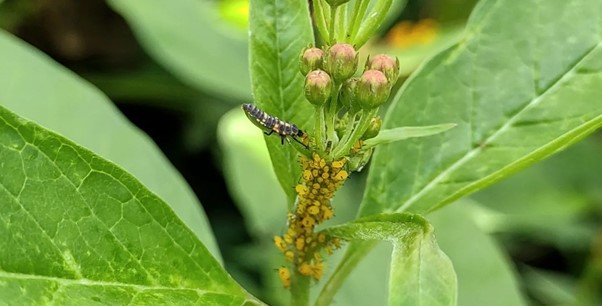
Ladybird larvae eating aphids
Again, many people in the group had not seen ladybirds in years, so I ask them, ‘Would you live in a place where there’s no food?’ Obviously, the answer is no. It is not desirable nor possible. You would die. So why would ladybirds live in your garden if there is no food? Aphids (as well as other small creatures) are ladybirds’ food. Kill the former and you will not get the latter. The ladybirds will go elsewhere. If there is nowhere for them to go and nothing for them to eat, they will die. It really is that simple.
The tour comes to an end. The visitors feel inspired and want to come back. I let them know that being organic it is not easy. And yes, other institutions have different priorities and rules about controlling pests. And Mother is unpredictable. She creates challenges and frustrations, so waiting for Her is not an option for some. I’ve been looking after Andromeda Botanic Gardens for over a decade and Mother, Mother Nature, will always be my guide. It really is that simple.
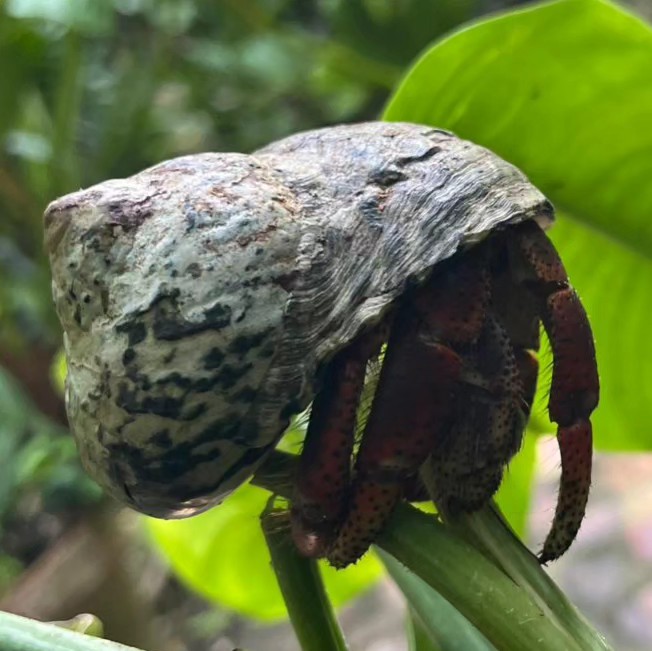
Hermit crab at Andromeda Botanic Gardens
About the Author
Sharon Cooke is the business owner and curator at Andromeda Botanic Gardens, Barbados. After completing her politics degree, she trained as a garden designer. While helping her dad, working on the ground (Barbadian for garden), she was astonished at his reliance on the use of pesticides and chemical fertilizers. He was told using these chemicals was the only way. She looked at the ocean, the beautiful landscape, the outstanding views and wondered about the lack of wildlife. This could not be the only way. She started growing herbs and vegetables organically, began teaching organic growing workshops alongside her classes on garden design. She has been responsible for the management and development of Andromeda Botanic Gardens since 2014, focusing on building on the legacy of the its creator Iris Bannochie; being inclusive for all Barbados’ communities; ensuring the garden is relevant to Barbados; and protecting and enhancing Andromeda’s biodiversity.
